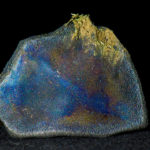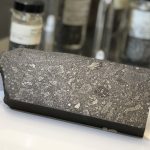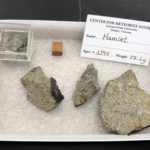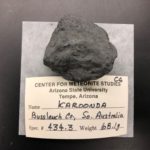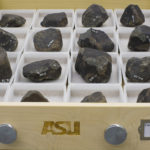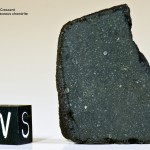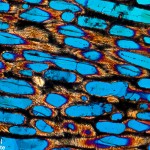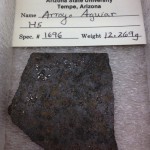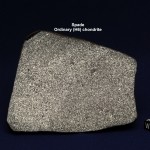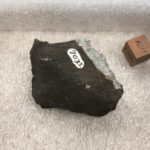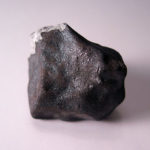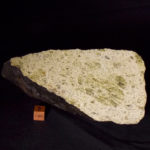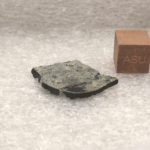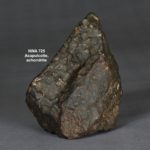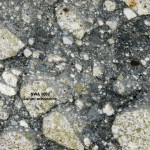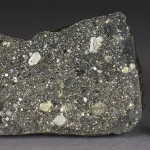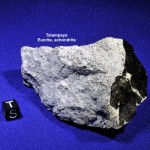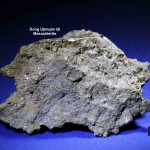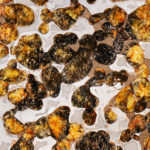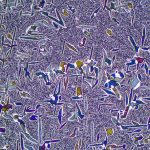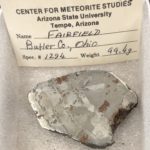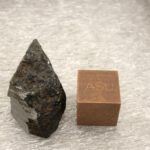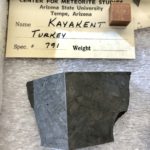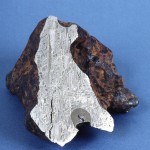Meteorite types
Click on the links and images below to explore the Carleton B. Moore meteorite collection at ASU!
Meteorite Landing Page
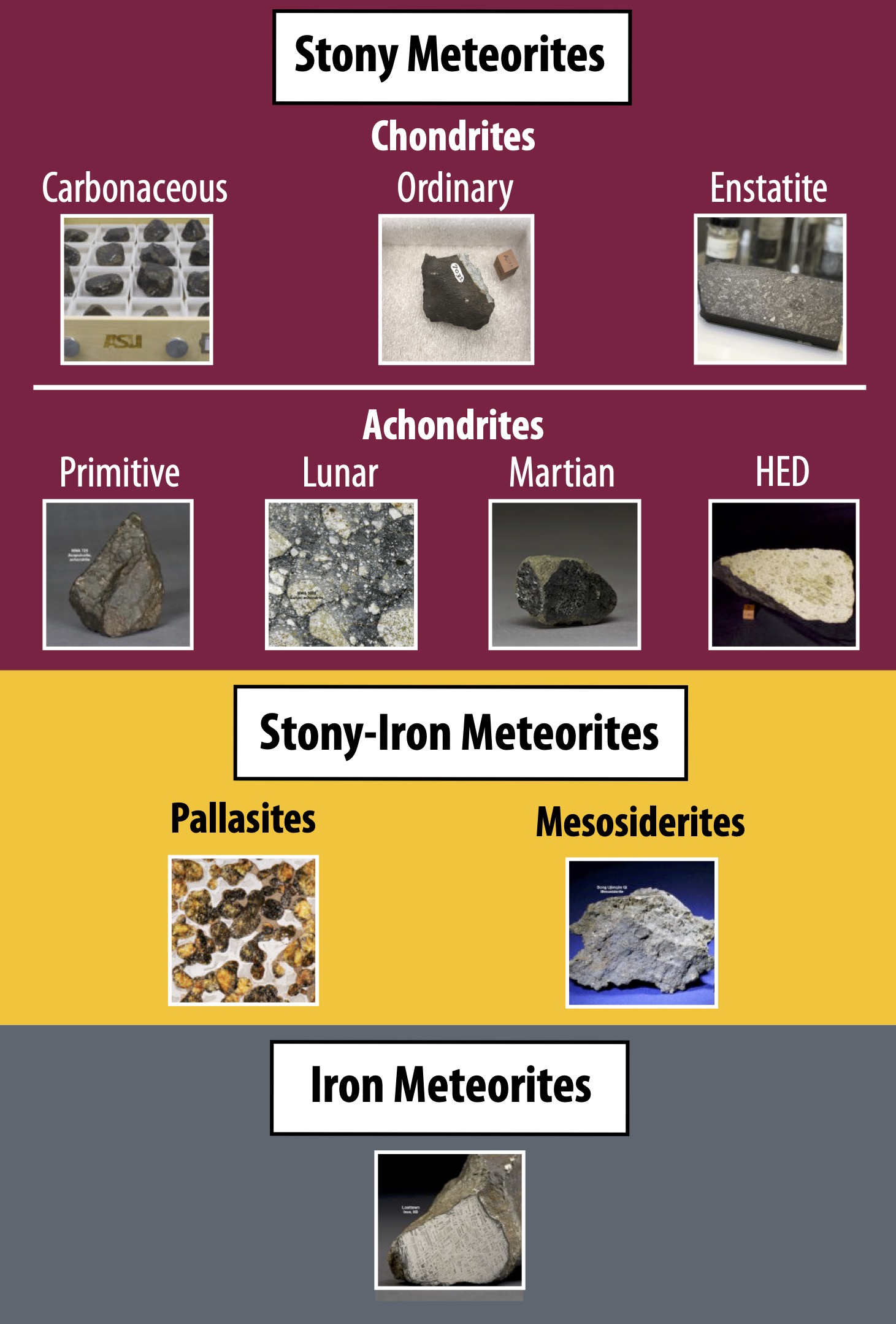
Stony Meteorites
Stony meteorites, the most common type of meteorite, are generally composed of approximately 75 – 90% silicon-based minerals, 10 – 25% nickel-iron alloy, and trace amounts of iron sulfide.
Stony meteorites account for ~94% of observed meteorite falls, and can be divided into two distinct categories: Chondrites and achondrites.
Click here to learn more about stony meteorites!
Click on the images below to learn more about some of the stony meteorites in the Buseck Center for Meteorite Studies collection!
Chondrites
The chondrites take their name from chondrules, the nearly spherical, silicate-rich particles they contain. They are the most abundant type of stony meteorite, and contain some of the first objects to have formed in the Solar System, including calcium-aluminum-rich inclusions (CAIs) and chondrules.
Chondrites have never undergone melting. Their chemistry is very primitive because they have had very few chemical interactions with other objects since their formation.
The most common meteorites found on Earth, chondrites account for approximately 86% of all meteorites recovered.
Click here to learn more about chondrites!
Click on the images below to learn more about some of the chondrites in the Carleton B. Moore meteorite collection!
Carbonaceous Chondrites
Carbonaceous chondrites generally have Mg/Si ratios near the solar value, and oxygen isotope compositions that plot below the terrestrial fractionation line.
Click here to learn more about carbonaceous chondrites!
Click on the images below to see examples of carbonaceous chondrites from the Carleton B. Moore meteorite collection!
Ordinary Chondrites
Ordinary chondrites generally show sub-solar Mg/Si and refractory/Si ratios, oxygen isotope compositions that plot above the terrestrial fractionation line, and a large volume percentage of chondrules, with only 10-15 volume percent fine-grained matrix.
Click here to learn more about ordinary chondrites!
Click on the images below to learn more about some of the ordinary chondrites in the Carleton B. Moore meteorite collection!
Enstatite Chondrites
Enstatite chondrites generally have sub-solar Mg/Si and refractory/Si ratios, oxygen isotope compositions that plot near the terrestrial fractionation line, and highly reduced mineral assemblages containing little FeO, Si-bearing metal, and sulfides of elements normally considered lithophile.
Click here to learn more about enstatite chondrites!
Click on the images below to see some of the enstatite chondrites in the Carleton B. Moore meteorite collection!
Achondrites
Achondrites lack chondrules, originate on differentiated planetary bodies (ie planetary bodies with a distinct core and crust), such as asteroids, planets, or moons, and were reformed from molten fragments that were flung into space as the result of another collision.
Click here to learn more about achondrites!
Click on the images below to learn about some of the achondrites in the Carleton B. Moore meteorite collection!
Primitive Achondrites
The primitive achondrites are achondrite meteorites that retain chondrite characteristics such as relic chondrules and chemical composition as the result of extensive recrystallization or partial melting.
Click here to learn more about primitive achondrites!
Click on the images below to learn about some of the primitive achondrites in the Carleton B. Moore meteorite collection!
Lunar Meteorites
These lunar rocks were ejected into space when another (asteroidal or cometary) object collided with the Moon with enough force to launch some of the impact-produced debris into Earth-crossing orbits.
Click here to learn more about lunar meteorites!
Click on the images below to learn more about some of the lunar meteorites in the Carleton B. Moore meteorite collection!
Martian Meteorites
These martian crustal rocks were ejected into space when another (asteroidal or cometary) object collided with Mars with enough force to launch some of the impact-produced debris into Earth-crossing orbits.
Click here to learn more about martian meteorites!
Click on the images below to learn about some of the martian meteorites in the Carleton B. Moore meteorite collection!
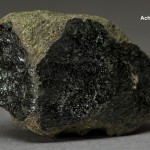
HED Meteorites
Members of the Howardite-Eucrite-Diogenite (HED) meteorite group are believed to have formed on the surface of asteroid 4-Vesta. According to radioisotope dating, the HED achondrites crystallized between 4.43 and 4.55 billion years ago.
Click here to learn more about HED meteorites!
Click on the images below to learn more about some of the HED meteorites in the Carleton B. Moore meteorite collection!
Stony-Iron Meteorites
Stony-iron meteorites contain approximately even amounts of silicates and nickel-iron alloy, and are divided into two distinct groups: Pallasites and mesosiderites.
Click here to learn more about stony-iron meteorites!
Click on the images below to learn more about some of the stony-iron meteorites in the Carleton B. Moore meteorite collection!
Mesosiderites
Mesosiderites are brecciated stony-iron meteorites that contain nearly equal amounts of metal and silicates.
They are likely formed by collisions of metal-rich and silicate-rich asteroids, and their silicate portion is composed mainly of igneous rock fragments.
Fewer than 150 mesosiderites have been identified to date.
Click here to learn more about mesosiderites!
Click on the images below to learn about some of the mesosiderites in the Carleton B. Moore meteorite collection!
Pallasites
Pallasites are believed to form between the silicate mantle, or outer shell, and molten metal core of a differentiated asteroid.
The primary silicate mineral in pallasites is olivine, distinguishable by its greenish hue.
The olivine crystals contained in the Marjalahti pallasite are of such consistently high purity that they were adopted as a scientific standard for the composition of olivine (aka the gemstone peridot).
Gem-quality peridot has been identified in multiple pallasite meteorites.
Click here to learn more about pallasites!
Click on the images below to learn about some of the pallasites in the Carleton B. Moore meteorite collection!
Iron Meteorites
Most iron meteorites likely originated in the cores of large asteroids, and are composed almost entirely of nickel-iron alloy, which is also a primary component of the Earth’s core.
Even though iron meteorites account for less than 5% of observed falls, they are more easily recognized than other types of meteorites.
Click here to learn more about iron meteorites!
Click on the images below to learn more about some of the iron meteorites in the Carleton B. Moore meteorite collection!
